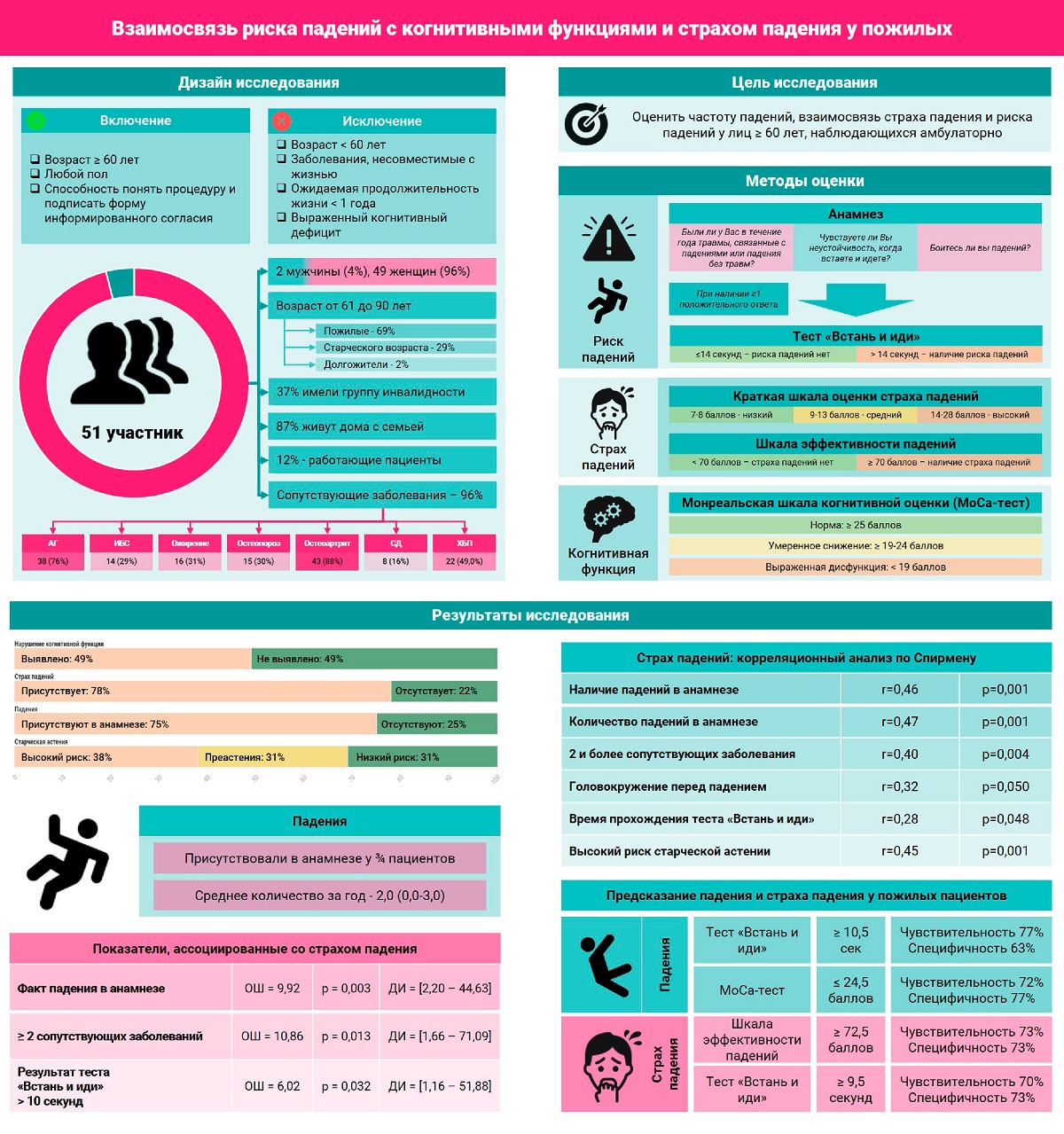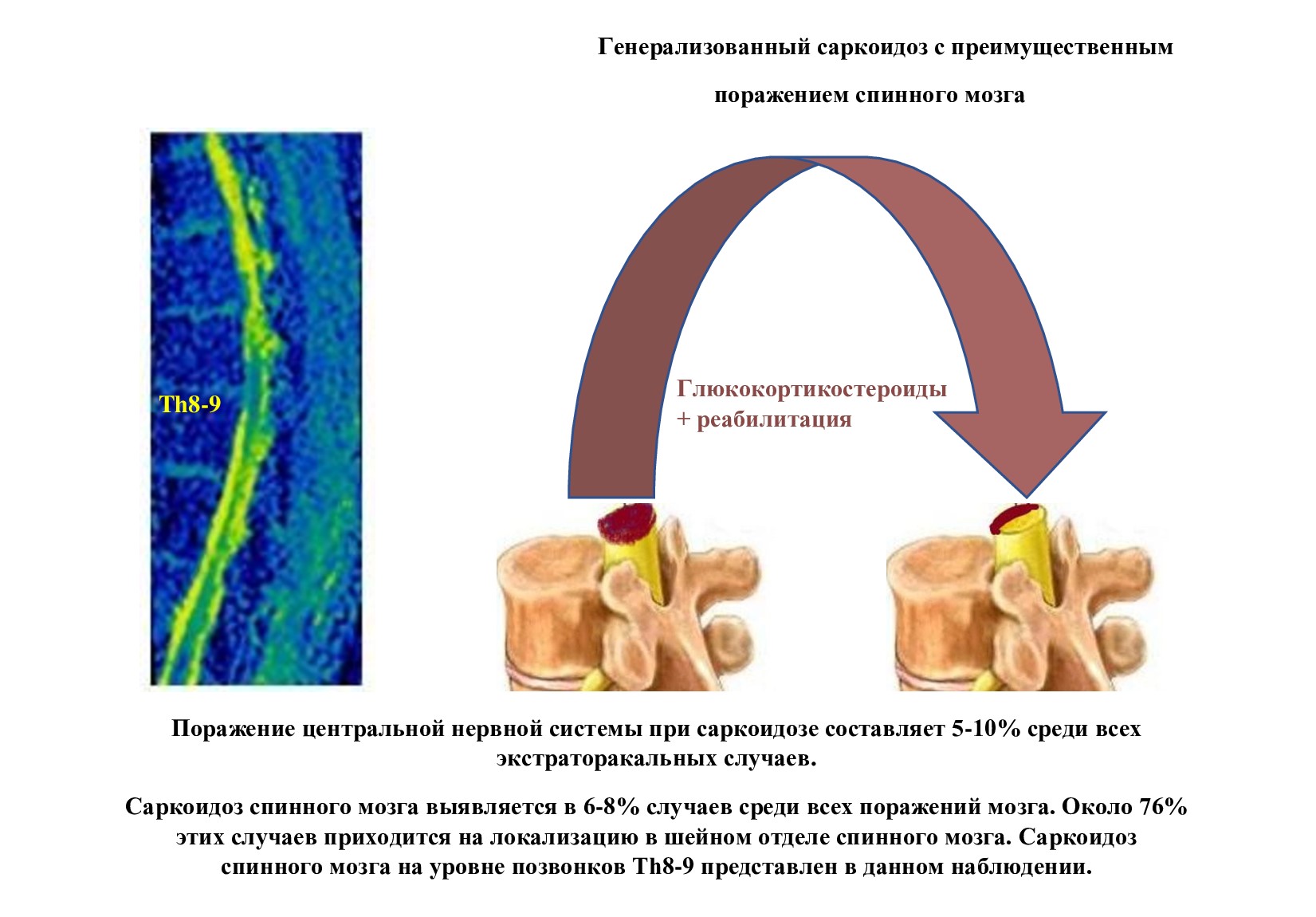REVIEW ARTICLES
Currently, there is a high scientific interest in studying the features of the structure and functions of the tubules of the kidneys. The relevance of the topic is due to the potential possibility of identifying various markers of tubular dysfunction and using them for early diagnosis of not only tubulopathies, but also glomerular disorders. In clinical practice, markers of tubular dysfunction are used insufficiently. The article presents information about the anatomical and functional features of the proximal and distal parts of the tubular apparatus, outlines highly organized mechanisms of intermolecular interaction, presents the main biologically active substances, the change in the concentration of which is a consequence of damage to the tubules. The presented manuscript is the product of a deep analysis and systematization of the available data in Russian and foreign information and analytical portals.
Inflammation is a universal response of a living organism to various damaging factors and is aimed at restoring tissue integrity and minimizing cell death. Proinflammatory cytokines, in particular interleukins, are active participants in the inflammatory response. In patients with heart failure, inflammatory reactions lead to damage to cardiomyocytes, their apoptosis and activation of neurohumoral systems, which contribute to the initiation of myocardial hibernation and mechanisms of its remodeling. The purpose of this review is to consider IL-1 as a diagnostic and prognostic marker in heart failure, as well as the effect of treatment with a recombinant form of IL-1R on the course of the disease.
Maturity-Onset Diabetes of the Young (MODY) is the most common form of monogenic diabetes resulting from a single gene mutation. It is characterized by mild hyperglycemia, autosomal dominant inheritance, early onset diabetes (<25 years), persistence of endogenous insulin secretion, and clinically and genetically distinct subtypes. Currently, 14 subtypes of MODY have been identified, differing in incidence, clinical features, severity of diabetes and associated complications, and response to treatment. This type of diabetes is mostly misdiagnosed as type 1 or type 2 diabetes mellitus due to clinical similarities to other types of diabetes, high cost and limited access to genetic testing, and lack of clinician awareness. As a result, thousands of patients do not receive proper treatment. Accurate diagnosis would allow for more effective therapeutic treatments other than those used for type 1 and type 2 diabetes. The purpose of this review is to raise clinicians’ awareness of MODY diabetes by focusing on updated information on methods for diagnosing and treating its 14 subtypes.
Osteoporosis is a widespread metabolic disease of the skeleton among the elderly. Osteoporotic fractures are significant manifestation of the disease, which can substantially affect the quality of life. The purpose of this article is to review approaches to the management of patients with acute osteoporotic fracture. This article consists of two parts. The first part reviews general information about osteoporosis, clinical course of osteoporotic fracture, differential diagnosis of pain syndrome, methods of visualization of fractures, differential diagnosis of osteoporosis. In the second part, we discuss differential diagnosis of osteoporotic fracture according to the data of imaging methods, non-pharmacologic, pharmacologic and surgical methods of treatment.
ORIGINAL ARTICLE
The purpose of the study is to establish the relationship between the accentuation of temperament properties, clinical picture of disease, and adherence to therapy in patients with gastroesophageal reflux disease with different phenotype of oxidative metabolism. Materials and methods. To achieve this goal, a case-control study was conducted in 156 patients aged 21 to 55 years (101 men and 55 women, mean age 38 years (IQR 29-46)) with verified gastroesophageal reflux disease with assessment of the clinical picture, assessment of the severity of symptoms using a visual analogue scale, concomitant pathology, adherence to therapy, phenotype of oxidative metabolism with the eufillin marker drug, determination of personal psychophysiological features using a temperament accentuation test. Statistical analyses were performed according to study objectives and data set features. Results. In patients with gastroesophageal reflux disease, 3 main personality types were identified: hyperthymic (n = 29; 19 %), mixed (n = 61; 39 %) and emotionally unstable type (n = 66; 42 %). By oxidative metabolism phenotype, 156 patients were divided into rapid (n = 51; 33 %), intermediate (n = 82; 52 %) and slow metabolizers (n = 23; 15 %). Analysis of multinomial logistic regression showed that in patients with rapid metabolism, in contrast to intermediate and slow metabolizers, low pain syndrome intensity should be expected (p = 0.014). There was no effect on the clinical presentation of temperament properties (p = 0.063). When studying the dependence of adherence to therapy on the properties of temperament and the patient`s metabolic level by multinomial logistic regression in patients with a hyperthymic type of accentuation of temperament properties, the probability of high adherence to therapy was more than 65 % in fast and intermediate metabolizers and 100 % in slow metabolizers (p = 0.006), in patients with mixed types the probability of high adherence to therapy is observed only in slow metabolizers (p = 0.006), patients with emotionally unstable type have a high probability of low adherence to therapy regardless of metabolic level (p = 0.006). Conclusion. To predict adherence of patients with gastroesophageal reflux disease to therapy, it is advisable to determine the level of oxidative metabolism and the type of accentuation of temperament properties.
Objective. To assess the frequency of falls, the relationship between fear of falling and the risk of falls in people aged 60 years and older. Material and methods. The open cross-sectional study included 51 outpatients (49 women, 2 men) aged 61 to 90 [70 (67; 75)] years. A conventional physical examination, clinical and biochemical blood tests, screening for fragility (the “Age is not a hindrance” questionnaire), the risk of falls (history, the “Get up and go” test), fear of falls (“Short scale for assessing the fear of falls”, “Scale of effectiveness falls”), assessment of cognitive function (CF) — Montreal scale of cognitive assessment — MoCa-test). Results. A high risk of senile asthenia was found in 38 %, preasthenia — in 31 %, a history of falls — in 75 %, fear of falls — in 78 %, impaired CF — in 49 % (MOCA 24.3±2.9 points) of patients. An association was found between fear of falls and history of falls (odds ratio [OR] 9.92, p=0.003, 95 % confidence interval [CI] 2.20-44.63), 2 or more comorbidities (OR 10.86, p=0.013, 95 % CI 1,66- 71,09); between the “Get up and go” test for more than 10 seconds and MOCA less than 25 points (OR 8.57, p=0.001, CI 2.4-30.3); scores less than 25 on the Fall Effectiveness Scale and MOCA (OR 5.6, p=0.018, CI 1.34-23.36). The optimal value of the “Get up and walk” test for predicting falls was 10.5 seconds or more (area under the curve 0.753±0.083, p=0.019), the MOCA test was 24.5 points or less (area under the curve 0.792±0.065, p <0.001); the fall effectiveness scale for predicting fear of falls — 72.5 points or more (area under the curve 0.743±0.092, p=0.014); test “Get up and go” — 9.5 seconds or more (area under the curve 0.708±0.098, p=0.036). Conclusion. Fear of falls was associated with a history of falls, соmorbidity, low functional activity, and a decrease in CF, which confirms the multifactorial origin of the fear of falls in older age and requires consideration in the development of comprehensive treatment and prevention programs.
GCK-MODY is one of the most common MODY variants (40–60 %) in the European population. It is possible to use continuous glucose monitoring systems (CGMS) when diagnosing GCK-MODY which allows for an analysis of glucose variability (GV) using mathematical indices and a detailed assessment of the glycemic profile. The purpose of this abstract is to investigate the features of GV in young people with GCK-MODY. A daily study of glucose levels was performed using portable systems for CGMS in 20 patients (7 men and 13 women, median age at diagnosis of DM was 28.0 [18.0; 36.0] years) with a mutation in the glucokinase gene confirmed by molecular genetic testing. There was also performed an analysis of glycemic variability indices with the specialized GLINVA program. Most patients with GCK-MODY have target values when determining routine indicators of carbohydrate metabolism (fasting plasma glucose (FPG) and glycated hemoglobin), they determines the tactics of managing patients from this group of patients (rational nutrition or minimal doses of oral hypoglycemic drugs). However, after conducting CGMS and studying the GV indices it was determined that in some patients the indices were higher than the reference values with normal levels of glycated hemoglobin and FPG, and it is this group of patients that needs therapy correction. The results demonstrate a flat glycemic profile during the day which probably causes a lower incidence of diabetic complications and determines the tactics of GCK-MODY patient management.
ANALYSIS OF CLINICAL CASES
Sarcoidosis, as systemic epithelioid cell granulomatosis, can be accompanied by damage not only to the intrathoracic lymph nodes and lungs, but also to other organs, in particular, the central nervous system and peripheral lymph nodes. In the spectrum of extrathoracic lesions, spinal cord sarcoidosis occurs only in 6-8 % of cases of all brain lesions. The presented clinical example illustrates the lesion of the spinal cord at the level of the thoracic region, although the literature more often describes the lesion of the cervical region. The disease was accompanied by sarcoidosis of the intrathoracic lymph nodes with rapid spontaneous regression and sarcoidosis of the supraclavicular lymph node. The diagnosis was confirmed after a peripheral lymph node biopsy. Spinal cord sarcoidosis in this patient was characterized by rapid regression against the background of parenteral administration of dexamethasone for 14 days, followed by transfer to tablet forms of prednisone. The positive dynamics of spinal cord sarcoidosis refuted the assumption of the presence of a sarcoid reaction in the lymph nodes against the background of a spinal cord tumor. The use of a course of rehabilitation techniques contributed to the recovery of working capacity.
ISSN 2411-6564 (Online)












































